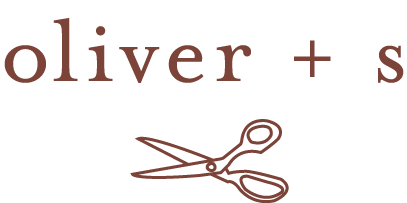The Handmaker's Factory were hosting their annual Dressmaker's Dinner/Do and a winter dress was in order. I'd fallen hard for this Tracey Reese Vogue pattern when I first spotted it and knew it was what I wanted to make. It seemed so perfect to me, heck she was even wearing my shoes!
Problem was I wanted that exact fabric on the pattern envelope. The pattern required a stable knit with about 25% stretch and I hunted high and low for a jacquard knit fabric that I liked. My criteria were a blue colour and a geometric print with a retro vibe.
I eventually found what I thought was perfect on Etsy, I paid what was undoubtedly too much, and a 5 yard cut was winging it's way to me from the states. Only when it arrived, it was 4 yards, it was seriously nasty and it looked a heck of a lot like a bad motel bedspread. To make matters worse it still had the original price stapled to the corner. I won't say anything more about that except to say congratulations to the Etsy seller. You made a hefty profit.
Of course while I was waiting on the postage of this fabric I went shopping for some navy ponte for the body of the dress. While I was out shopping I found my navy ponte and a superb navy and burgundy geometric wool jacquard. Isn't that always the way. Oh, and of course I found my leftover navy ponte in the stash was just enough after all. Oops.
Anyway, while I hated the feel of the fabric (you need to file your nails and wear a lot of handcream before you touch a polyester as nasty as this), I did like the colour and the design. At least I did until I tried cutting the pattern and realised the whole thing was skewed and warped. To get my woven rectangles straight on the pattern tissue I had to pull and twist the fabric and that's probably why none of the hems sit as straight and precisely as they should.
All to say that I will want to revisit this pattern with the lovely wool jacquard, because I love the pattern. I was sewing this version up thinking I could do a redux with the good fabric, but then I noticed just how many pattern pieces and steps were involved. Time got away from me and I wore my muslin version out to dinner in the end.
The whole thing consists of an under dress with a jacket type overlay. The under-dress has a front with gathering under the bust, a waist yoke and then these back panels with a centre invisible zip. The overlay is also lined, except for the sleeves, and then the whole dress has a complete lining as well. So the top half is four layers of fabric. Given that I wasn't going to get my dry skin caught on the polyester, I was really very warm and comfy in my bedspread!
The challenge, as always for me was in fitting. I made a straight size 14 but then took it in at the centre back seam with the zipper by increasing the seam allowance form 5/8 to 7/8". I would have liked to have had the waist section even more fitted but without a continuous side seam there was nowhere to make last minute further adjustments. I think I could have sized down by one size overall.
For my lining fabric I used a tricot mesh knit. The lightness of that worked well although there's a mismatch of stretchiness with the outer fabric. I understitched the neckline as per the instructions but then also handstitched the shoulder seams to keep that more stretchy lining from peeking out.
Which brings me to those zips (new earworm - "I've got big zips and I cannot lie...")
They're purely decorative but are a really fun aspect of the pattern - part of what gives it the retro airline hostess vibe. The pattern says 3" to 5" zips but I suspect no matter what size you make a 4" zip is what you need. I couldn't find chunky enough zips in such a short length so I bought some jacket zips and attacked them with the pliers.
It's the back and side views of this pattern that I really like. The skirt is a lovely shape too and if I can get the waistline fitted properly I think the under dress on it's own could be really nice.
The pattern gets two thumbs up. It's a lot of pieces and a lot of steps but there are no hard bits and the instructions are perfectly adequate. I didn't quite follow the hemming instructions to the letter. It suggested enclosing the raw hem edge with the bias binding but I thought that was too bulky. I stitched my bias to the hem edge, pressed it up and then blindstitched the opposite folded edge of the bias to the dress to finish the hem.
I was delighted to find these cute little turquoise, rectangular metal earrings. Perfect match!
The dinner was excellent. Just a dozen of us in a lovely restaurant that was so close to home I could stagger down and back in my heels. Everyone looked smashing of course and it was nice to see familiar faces and chat and meet a new sewing friend or two. Thanks to the Handmaker's team!
Pattern: Vogue 1512
Size: 14 -with extra taken out at centre back seam
Fabric: is it "vintage" or is it just a nasty polyester bedspread?.... navy ponte and navy tricot mesh lining
Notions: invisible zip, chunky decorative shoulder zips



























































